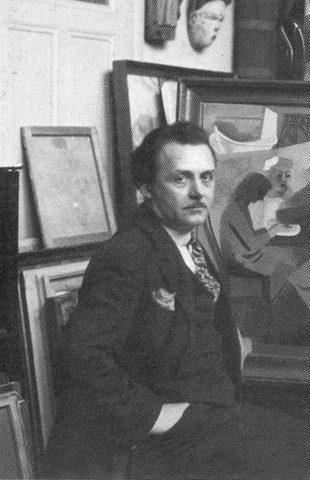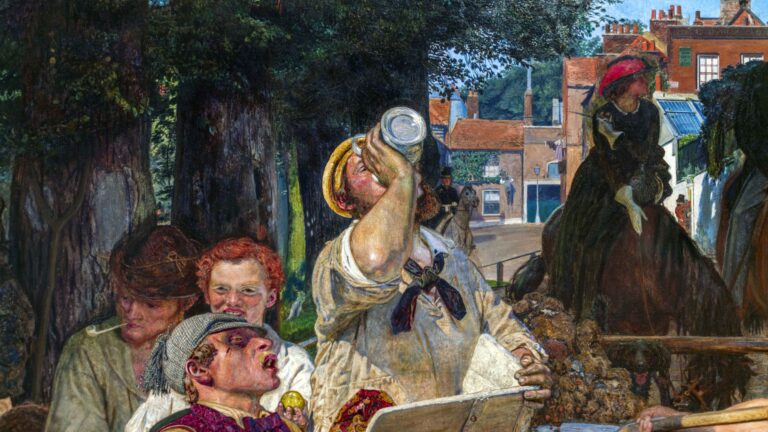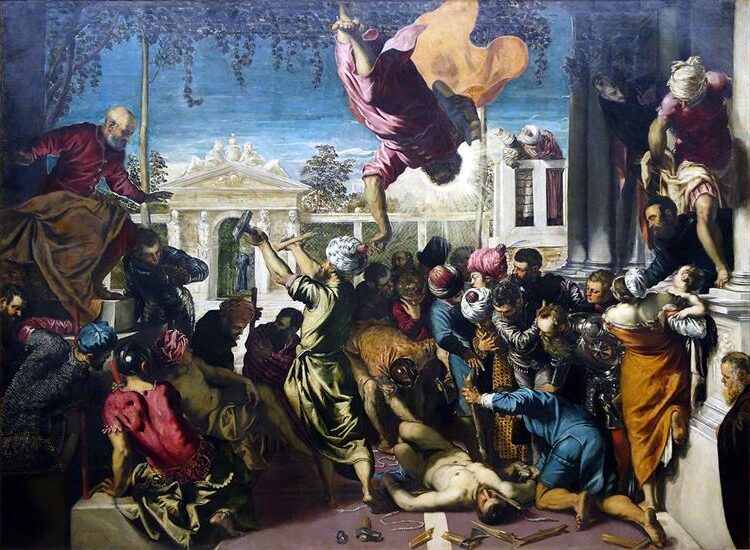André Lhote Painter: Cubist Pioneer and Art Theorist of 20th Century France
Born: 5 July 1885, Bordeaux, France
Death: 24 January 1962, Paris, France
Art Movement: Cubism
Nationality: French
Influenced By: Gauguin and Cézanne
Institution: École des Beaux-Arts, Bordeaux
André Lhote Painter: Cubist Pioneer and Art Theorist of 20th Century France
Life and Legacy of André Lhote
André Lhote was a French painter who made significant contributions to Cubism and art education. His life spanned from 1885 to 1962, during which he shaped modern art through his work and teachings.
Early Years and Education
André Lhote was born in Bordeaux in 1885. At age 12, he started learning wood carving and sculpture from a local furniture maker. This early training sparked his interest in art.

Paysage de Mirmande (or Le Guetteur) (1939) by André Lhote
From 1898 to 1904, Lhote studied decorative sculpture at the École des Beaux-Arts in Bordeaux. He began painting in 1905, exploring various styles and techniques.
In 1906, Lhote moved to Paris to pursue his artistic career. The vibrant art scene in the city exposed him to new ideas and movements that would shape his future work.
Influence and Parisian Years
In Paris, Lhote became part of the Montparnasse art community. He taught at several art schools, including the Académie Notre-Dame des Champs.
Lhote’s work caught the attention of art dealer Léonce Rosenberg, who promoted his paintings. This support helped Lhote gain recognition in the art world.
During World War I, Lhote served in the French army. After the war, he returned to Paris and continued painting and teaching. He also wrote for the Nouvelle Revue Française, sharing his thoughts on art theory and criticism.
Global Impact and Later Life
Lhote’s influence spread beyond France. He taught students from many countries, shaping a new generation of artists. His books on art theory were translated into several languages.

La Plage (1920) by André Lhote
In 1950, Lhote helped form the International Association of Painters, Engravers and Sculptors. This group promoted artistic exchange across borders.
UNESCO recognized Lhote’s contributions to art education. In 1955, he received the Grand Prix National de Peinture, a top French art award. Lhote continued painting and teaching until his death in 1962, leaving a lasting mark on 20th-century art.
Artistic Style and Contributions
André Lhote’s work blended Cubist techniques with traditional styles. He explored various subjects and played a key role in shaping modern art.
Cubism and Its Evolution
Lhote started as a Fauvist painter but soon embraced Cubism. He joined the Section d’Or group in 1912. This group pushed Cubist ideas forward.

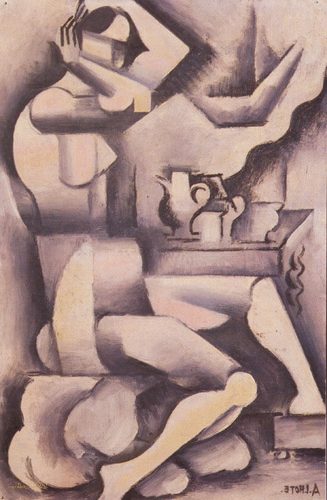
Lhote’s Cubism was more moderate than some of his peers. He kept recognizable forms in his paintings, making his work more accessible to many viewers.
His style mixed angular Cubist shapes with bright colors from Post-Impressionism. This blend became his signature approach.
Works and Exhibitions
Lhote painted a wide range of subjects. These included landscapes, portraits, figure studies, and still lifes. He often used oil on canvas for his works.
He showed his art at important venues. The Salon d’Automne and Salon de la Section d’Or featured his paintings. Galerie Druet in Paris also displayed his work.
Lhote’s art can be found in major museums today. The Tate Gallery in London has some of his pieces. His paintings show how Cubism changed over time.
Educator, Writer, and Influences
André Lhote made significant contributions to modern art as a teacher, writer, and critic. His ideas and methods shaped many aspiring artists in the early 20th century.
Teaching Philosophy and Academy
Lhote founded the Académie André Lhote in Paris, where he taught for over 40 years. His teaching focused on blending traditional techniques with modern approaches. Lhote believed in the importance of solid draftsmanship and composition.
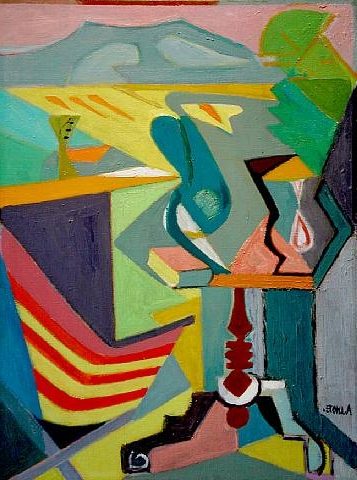

He encouraged students to study classical art while exploring new ideas. Many notable artists trained under Lhote, including Tamara de Lempicka and Henri Cartier-Bresson. His academy attracted students from around the world.
Lhote also taught at the Académie de la Grande Chaumière. His classes were popular and influential in shaping young artists’ styles and techniques.
Art Criticism and Theoretical Works
Lhote was a prolific writer on art theory and criticism. He wrote regularly for La Nouvelle Revue Française from 1918 to 1940. His articles covered painting, sculpture, and art history.
In 1939, Lhote published a major work on landscape painting. He followed this with a book on figure painting in 1950. These texts explained his ideas on composition, color, and form.
Lhote’s writings helped shape discussions about modern art. He aimed to bridge the gap between traditional and avant-garde approaches. His clear writing style made complex art concepts accessible to many readers.
Artistic Inspirations
Paul Gauguin and Paul Cézanne greatly influenced Lhote’s early work. He admired Gauguin’s bold use of color and simplified forms. From Cézanne, Lhote learned about structuring compositions with geometric shapes.
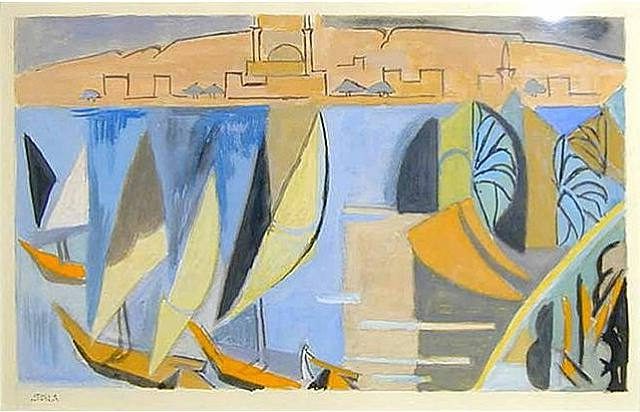
Le Nile (1952) by André Lhote
The Fauves also impacted Lhote’s style, especially their vivid colors. Around 1910, he became interested in Cubism. This led him to experiment with fractured forms and multiple viewpoints in his paintings.
Lhote’s work blended elements from various modern art movements. He tried to create a balanced approach that respected tradition while embracing new ideas. This synthesis of styles became a key part of his teaching and writing.
Frequently Asked Questions
André Lhote was an important French artist and teacher in the early 20th century. He made key contributions to Cubism and art education.
What artistic movement is André Lhote associated with?
André Lhote is mainly linked to Cubism. He helped shape this style in the early 1900s. Lhote blended Cubist ideas with more traditional painting methods.
How did André Lhote contribute to the development of Cubism?
Lhote brought a unique view to Cubism. He mixed Cubist shapes with realistic elements. This approach made Cubism more accessible to many people.
Can you name some of André Lhote’s most influential works?
Some of Lhote’s key paintings include “The Port of Bordeaux” and “Harvest”. These works show his skill in blending Cubist and classical styles.
What was André Lhote’s impact on 20th-century art?
Lhote played a big role in spreading modern art ideas. He taught many young artists who later became famous. His writings on art theory were also very important.
How did André Lhote’s style evolve throughout his career?
Lhote’s art changed over time. He started with more traditional styles, then adopted Cubist ideas. In his later work, he found a balance between modern and classic art.
What were André Lhote’s contributions as an art teacher and theorist?
Lhote founded the Académie André Lhote in Paris in 1922. He taught many students there. Lhote also wrote books on art theory that helped explain modern art ideas to many people.


